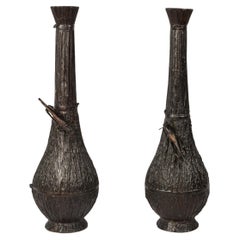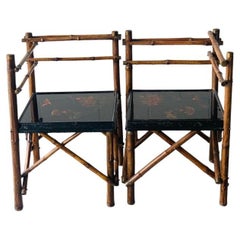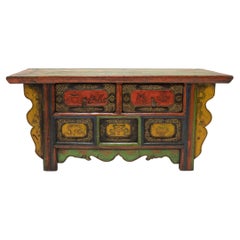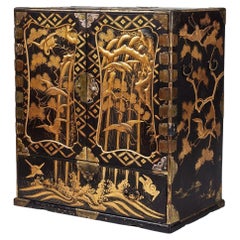19th Century Asian Art and Furniture
Japanese Antique 19th Century Asian Art and Furniture
Bronze
Unknown Art Nouveau Antique 19th Century Asian Art and Furniture
Bamboo, Lacquer
Chinese Qing Antique 19th Century Asian Art and Furniture
Stone, Jade
Tibetan Tibetan Antique 19th Century Asian Art and Furniture
Hide, Wood, Paint
Japanese Edo Antique 19th Century Asian Art and Furniture
Lacquer
Japanese Antique 19th Century Asian Art and Furniture
Paper
Japanese Antique 19th Century Asian Art and Furniture
Paper
Japanese Antique 19th Century Asian Art and Furniture
Wood
Japanese Antique 19th Century Asian Art and Furniture
Lacquer
Chinese Antique 19th Century Asian Art and Furniture
Silver
Qing Antique 19th Century Asian Art and Furniture
Brass
Chinese Chinese Export Antique 19th Century Asian Art and Furniture
Porcelain
Indian Anglo Raj Antique 19th Century Asian Art and Furniture
Silver
Chinese Qing Antique 19th Century Asian Art and Furniture
Elm
Japanese Meiji Antique 19th Century Asian Art and Furniture
Wood
Italian Antique 19th Century Asian Art and Furniture
Mirror, Wood
Japanese Edo Antique 19th Century Asian Art and Furniture
Copper, Enamel
Japanese Qing Antique 19th Century Asian Art and Furniture
Porcelain
French Japonisme Antique 19th Century Asian Art and Furniture
Bronze, Enamel, Gold Leaf
Chinese Qing Antique 19th Century Asian Art and Furniture
Bamboo
Japanese Meiji Antique 19th Century Asian Art and Furniture
Wood, Lacquer
Chinese Qing Antique 19th Century Asian Art and Furniture
Porcelain
Antique 19th Century Asian Art and Furniture
Lacquer
Chinese Chinoiserie Antique 19th Century Asian Art and Furniture
Bronze
Japanese Anglo-Japanese Antique 19th Century Asian Art and Furniture
Wrought Iron
Chinese Chinese Export Antique 19th Century Asian Art and Furniture
Bone, Silk
Asian Antique 19th Century Asian Art and Furniture
Bronze
Southeast Asian Chinoiserie Antique 19th Century Asian Art and Furniture
Bronze
Chinese Qing Antique 19th Century Asian Art and Furniture
Metal
Japanese Meiji Antique 19th Century Asian Art and Furniture
Reed, Wood
Philippine Rustic Antique 19th Century Asian Art and Furniture
Natural Fiber, Wood
Chinese Qing Antique 19th Century Asian Art and Furniture
Silk
Japanese Edo Antique 19th Century Asian Art and Furniture
Wood
Chinese Qing Antique 19th Century Asian Art and Furniture
Porcelain
Chinese Qing Antique 19th Century Asian Art and Furniture
Porcelain
Thai Antique 19th Century Asian Art and Furniture
Ceramic
Indian Antique 19th Century Asian Art and Furniture
Brass
Indonesian Antique 19th Century Asian Art and Furniture
Wood
Chinese Antique 19th Century Asian Art and Furniture
Jade
Chinese Qing Antique 19th Century Asian Art and Furniture
Stone, Jade
Burmese Antique 19th Century Asian Art and Furniture
Wood
Chinese Qing Antique 19th Century Asian Art and Furniture
Brass
Japanese Meiji Antique 19th Century Asian Art and Furniture
Wood
Japanese Art Nouveau Antique 19th Century Asian Art and Furniture
Brass
Chinese Qing Antique 19th Century Asian Art and Furniture
Porcelain, Wood
Japanese Antique 19th Century Asian Art and Furniture
Bronze
Korean Campaign Antique 19th Century Asian Art and Furniture
Brass
Chinese Qing Antique 19th Century Asian Art and Furniture
Paper
Chinese Qing Antique 19th Century Asian Art and Furniture
Wood
Japanese Antique 19th Century Asian Art and Furniture
Iron
Japanese Antique 19th Century Asian Art and Furniture
Porcelain
Japanese Meiji Antique 19th Century Asian Art and Furniture
Silk, Brocade
Burmese Antique 19th Century Asian Art and Furniture
Bronze
Japanese Antique 19th Century Asian Art and Furniture
Paper
Thai Antique 19th Century Asian Art and Furniture
Ceramic
Antique 19th Century Asian Art and Furniture
Wood
Chinese Export Antique 19th Century Asian Art and Furniture
Porcelain
Chinese Rustic Antique 19th Century Asian Art and Furniture
Iron
Read More
Chicago’s Pagoda Red Has a Spirited Mix of Asian Antiques and Bold New Art
For 25 years, gallerist Betsy Nathan has leveraged her keen eye and key connections to bring a unique selection of rare finds to the market.
In L.A., Gallerist JF Chen Has Long Championed Eclectic Blue-Chip Design
Now working alongside his daughter Bianca, dealer Joel Chen has presented a most covetable array of antiques, art and contemporary creations for more than 40 years.
12 Calming Spaces Inspired by Japanese Design
From cherry-blossom-adorned walls paired with glamorous lighting to wood-paneled ceilings above checkerboard-patterned chairs, these 12 spaces seamlessly blend Eastern and Western aesthetics.
Rodrigo Rivero Lake’s Mexico City Showroom Is a Museum-Worthy Trove of Spanish Colonial and Asian Antiques
The dealer and curator has spent the past 50 years amassing a collection of exceptional art, furniture and architectural elements that trace the cultural influence of the Spanish empire from Europe to the Americas and beyond.
16 Refined Asian-Inspired Interiors
These spaces exemplify how Eastern elements elevate a home's decor.



